7 Ways to Improve Battery Life on Windows 11
Extend battery life in Windows 11 using Power Save Mode
If you're looking for an easy way to extend battery life in Windows 11, use Power Save Mode.
To use Power Save Mode on Windows 11, use the following steps:
- Click Start or press the Windows keyTo launch the Start menu and select Settings. Alternatively, you can use the keyboard shortcut Windows key I to open Settings directly.
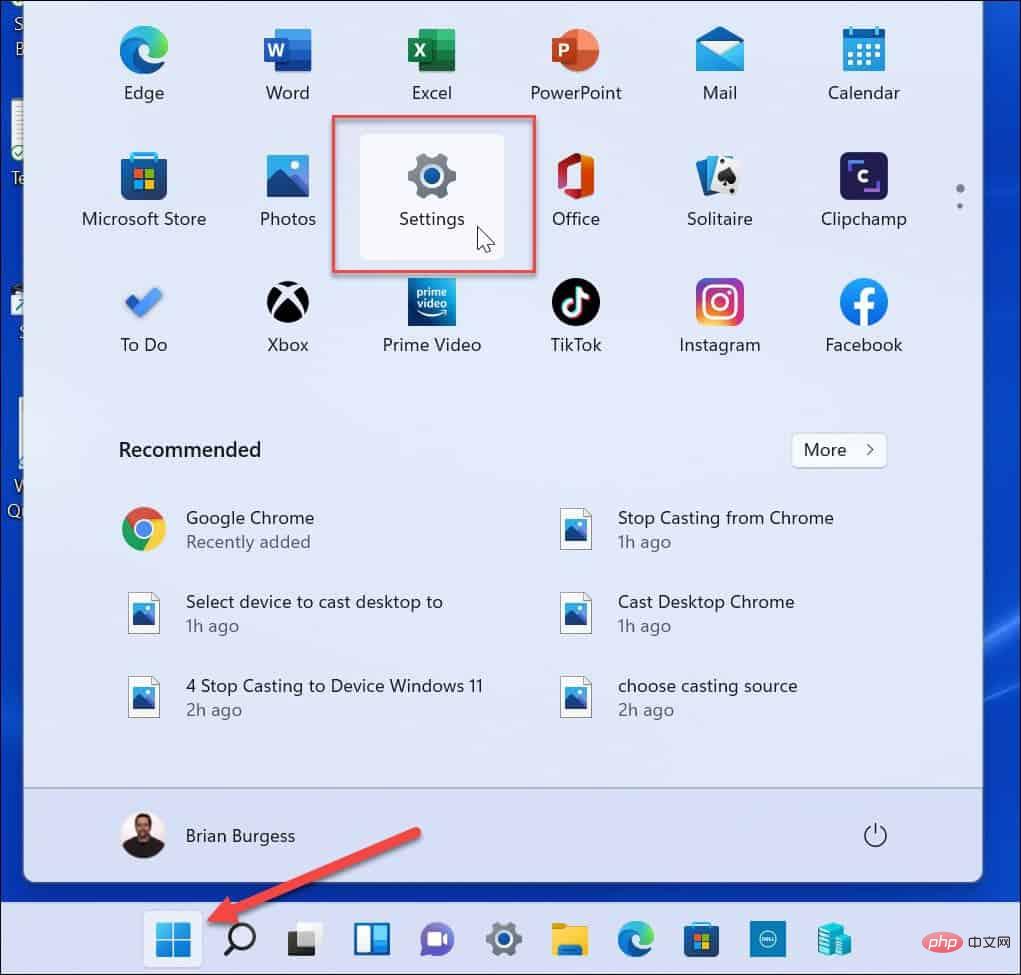
- When settings open, select System from the list on the left and Power & Battery on the right Options.
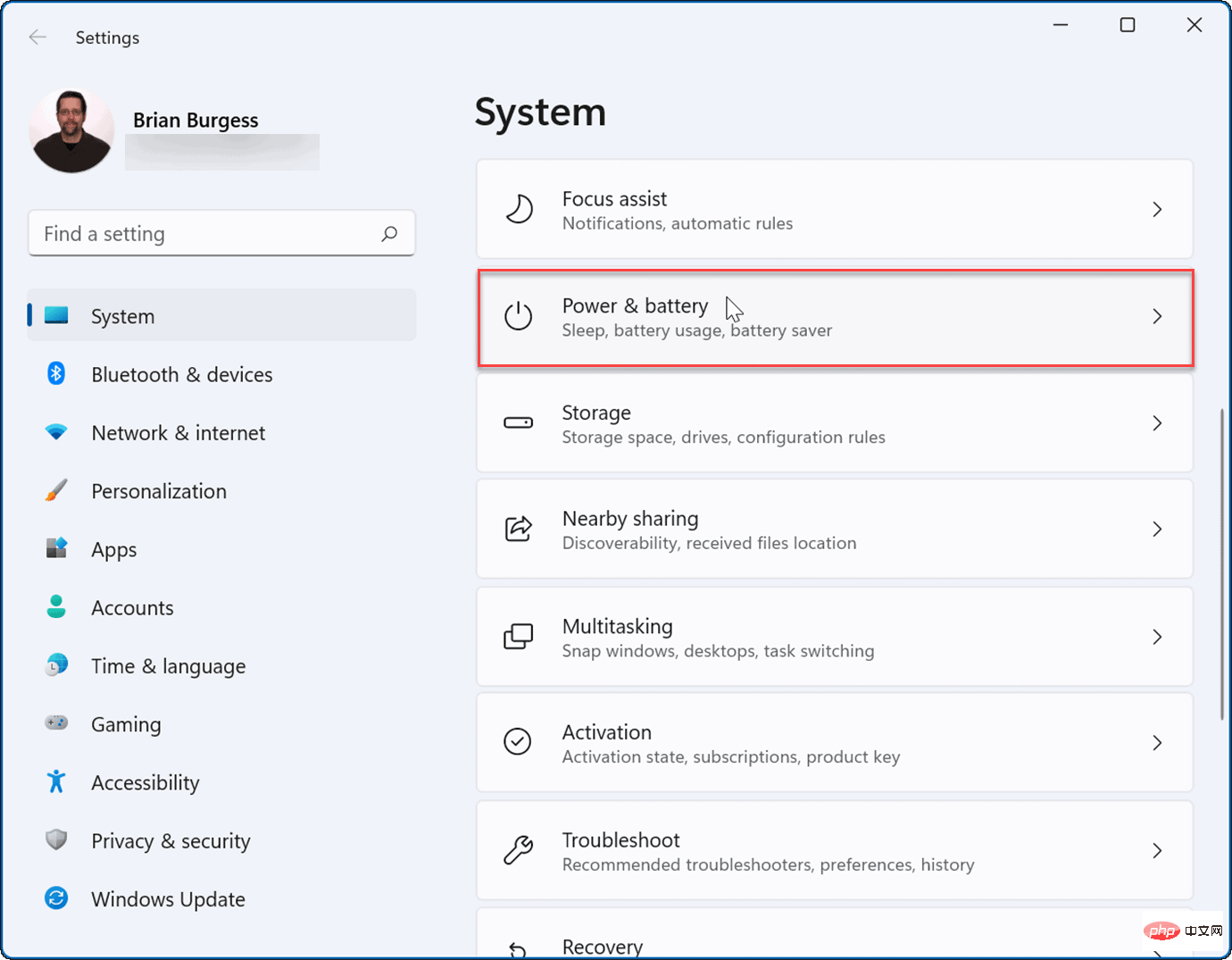
- Next, click on the "Power Saving Mode" option to expand it, then click on "Now Open" button.
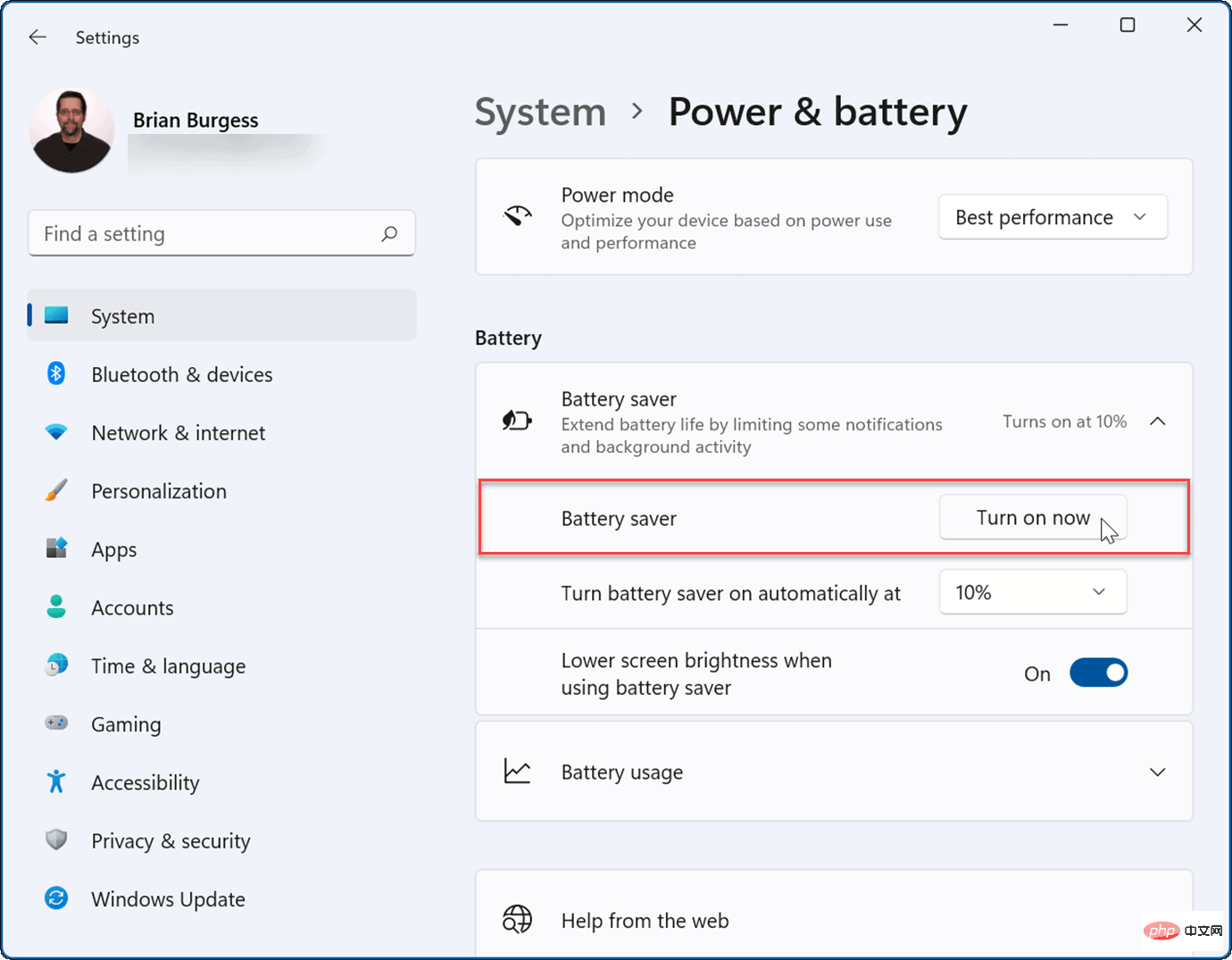
- When power saving mode is turned on, the screen brightness will be reduced and some background processes will be stopped. For example, OneDrive sync will pause to help preserve battery life.
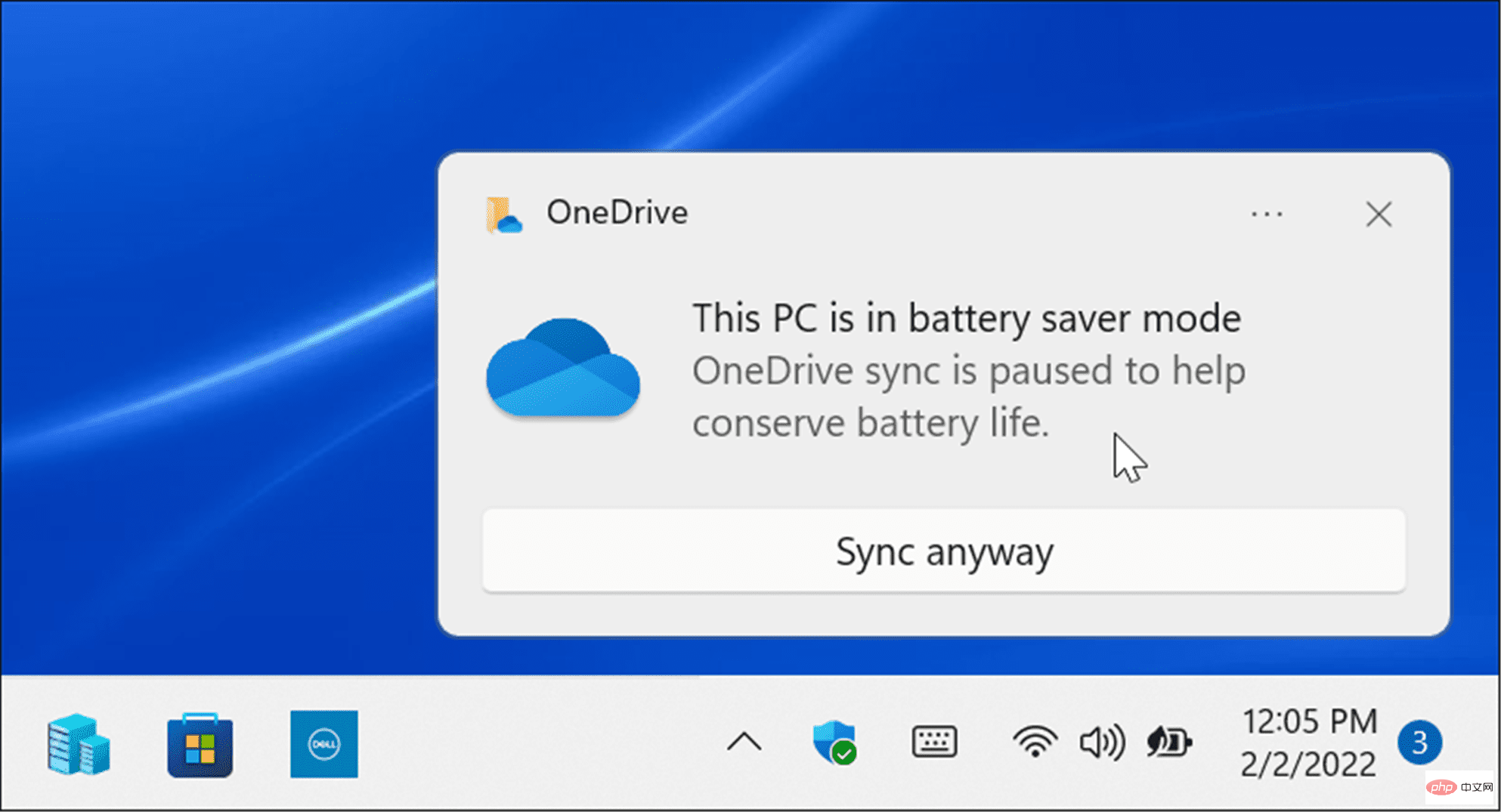
- You can also set Power Saving Mode to turn on automatically. Click the menu next to Automatically turn on battery saver mode and select Battery percentage.

Note: Make sure that you turn the screen brightness down to on# when using battery saver mode ##Location. A bright screen can significantly impact battery life.

- Click
- Start or press the Windows keyOpen Start menu and click the Settings icon.

- After opening Settings, go to System > Display > Brightness
- and then up or Move the slider down to adjust the brightness of the display.
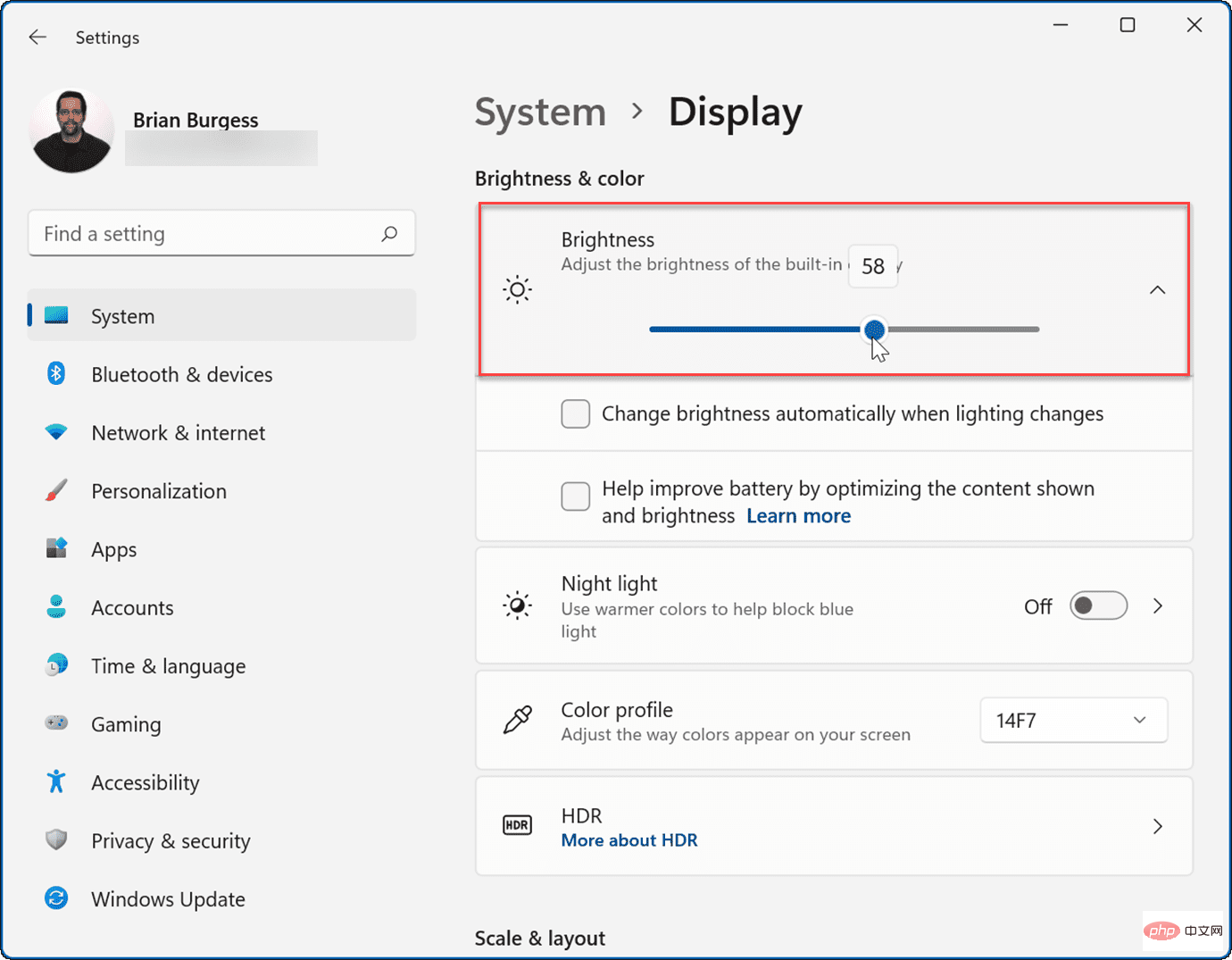
- Windows key A
- to launch the menu and use the brightness slider.
 #Reducing the brightness level of your screen will significantly improve battery life. You need to set it to the percentage that allows you to view the item on the screen. It's a trial and error process.
#Reducing the brightness level of your screen will significantly improve battery life. You need to set it to the percentage that allows you to view the item on the screen. It's a trial and error process.
Set the display to automatically turn off
Sometimes you walk away from your laptop and leave the screen on, which wastes battery life. Therefore, you can adjust when the screen turns off.
To change when the display automatically turns off, use the following steps:
Click the- Start
- button or press the Windows keyor Use the Windows key I and open Settings.

- System > Power & Battery
- and expand the Power section The Screen and Sleep option under.
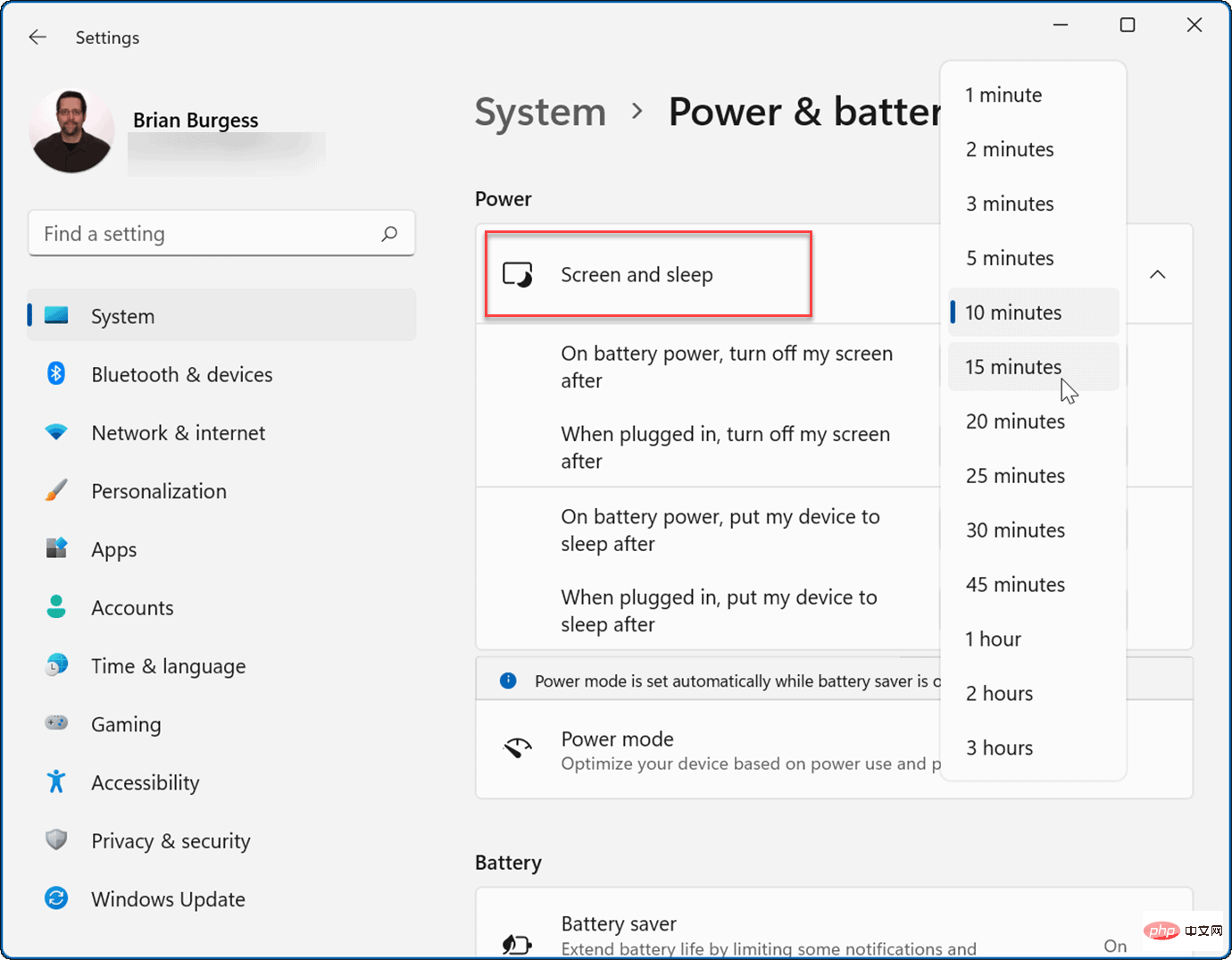
- Now your PC screen will turn off after the number of minutes you set to save battery life. Note that you can also set it to turn off or go to sleep when plugged into a power outlet.
Change Power Mode
Changing the default power mode can also extend battery life.
To change the power mode on Windows 11, use the following steps.
- OpenStart > Settings, then go to System > Power & Battery.

- # Use the Power Mode drop-down menu to choose the best option. You can choose from the following options:
- Best Power Efficiency: Reduces system performance and provides the best option to save energy and extend battery life
- Balance: Allow Windows 11 to automatically balance energy and performance.
- Best Performance: Improves system performance, but uses the most power and shortens battery life.
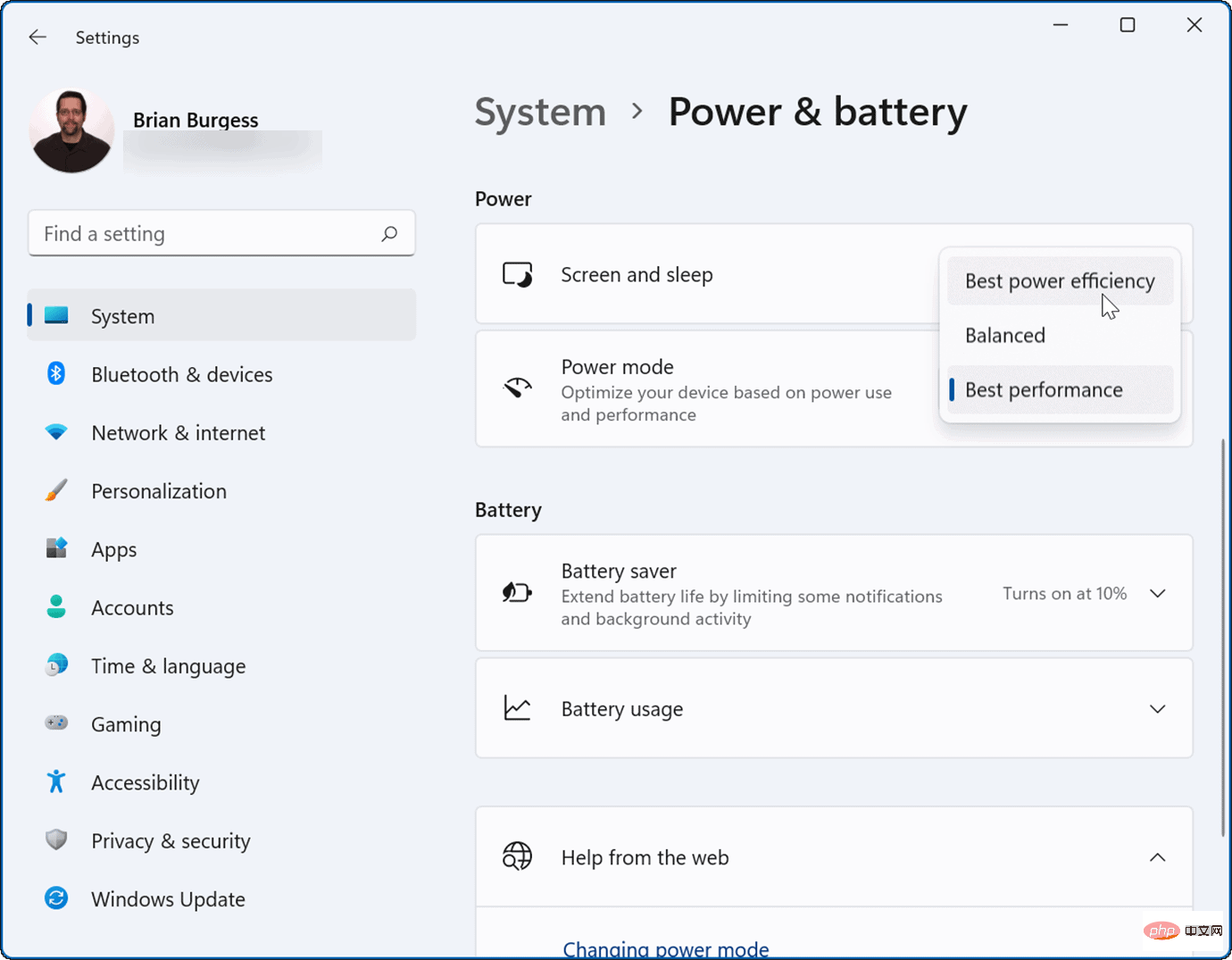
You may want to use Best Power Efficiency to use less energy and get the most out of your laptop's battery.
Manage App Background Activity
Many of your apps run processes and exchange information in the background. If you find that your battery is draining while using a particular app, you can adjust its background activity to extend battery life.
To manage app background activity, use the following steps:
- Open Start > Settings and navigate to Apps > Apps & Features.
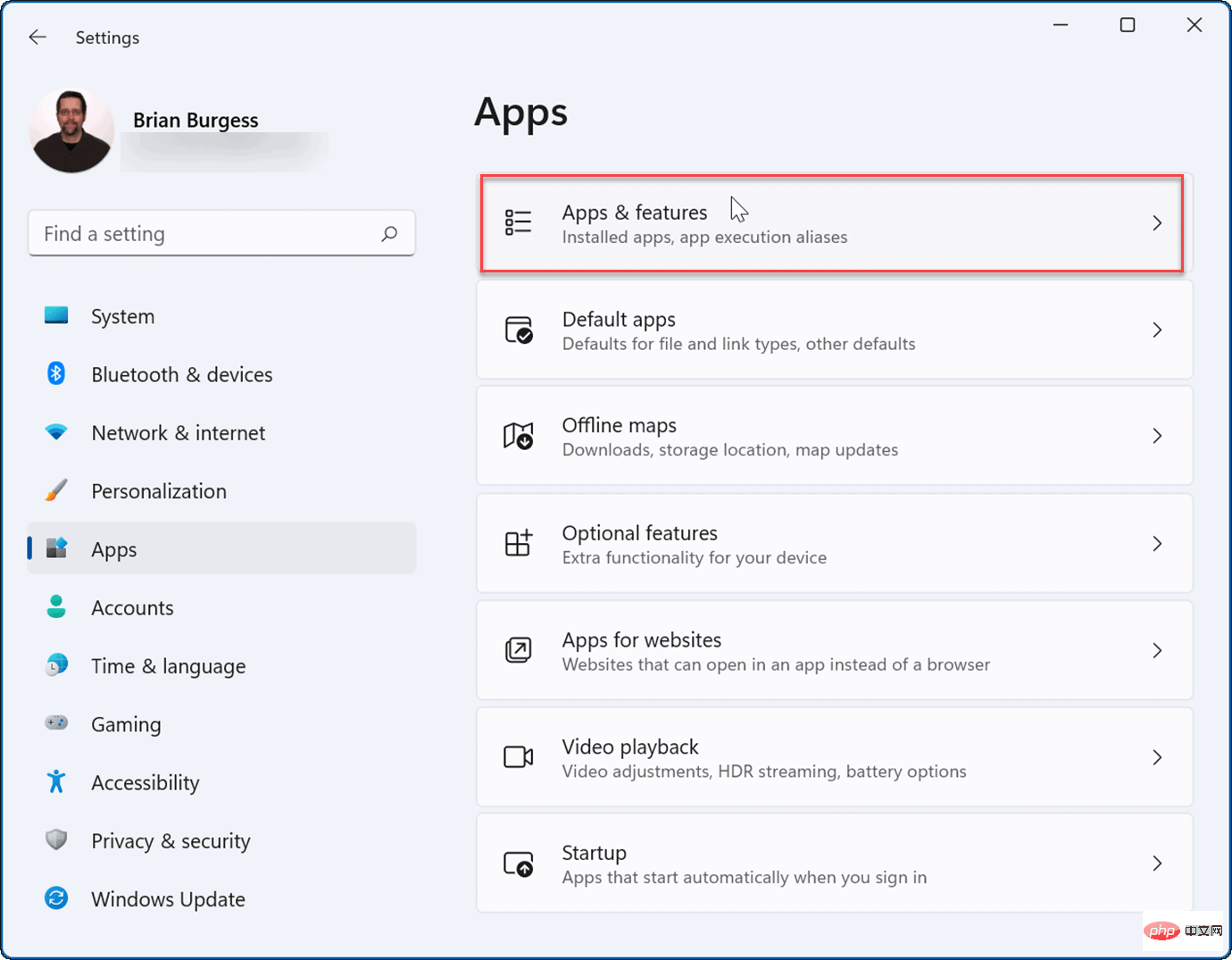
- Next, scroll down and click the three-dot menu next to the offending app and select Advanced Options.
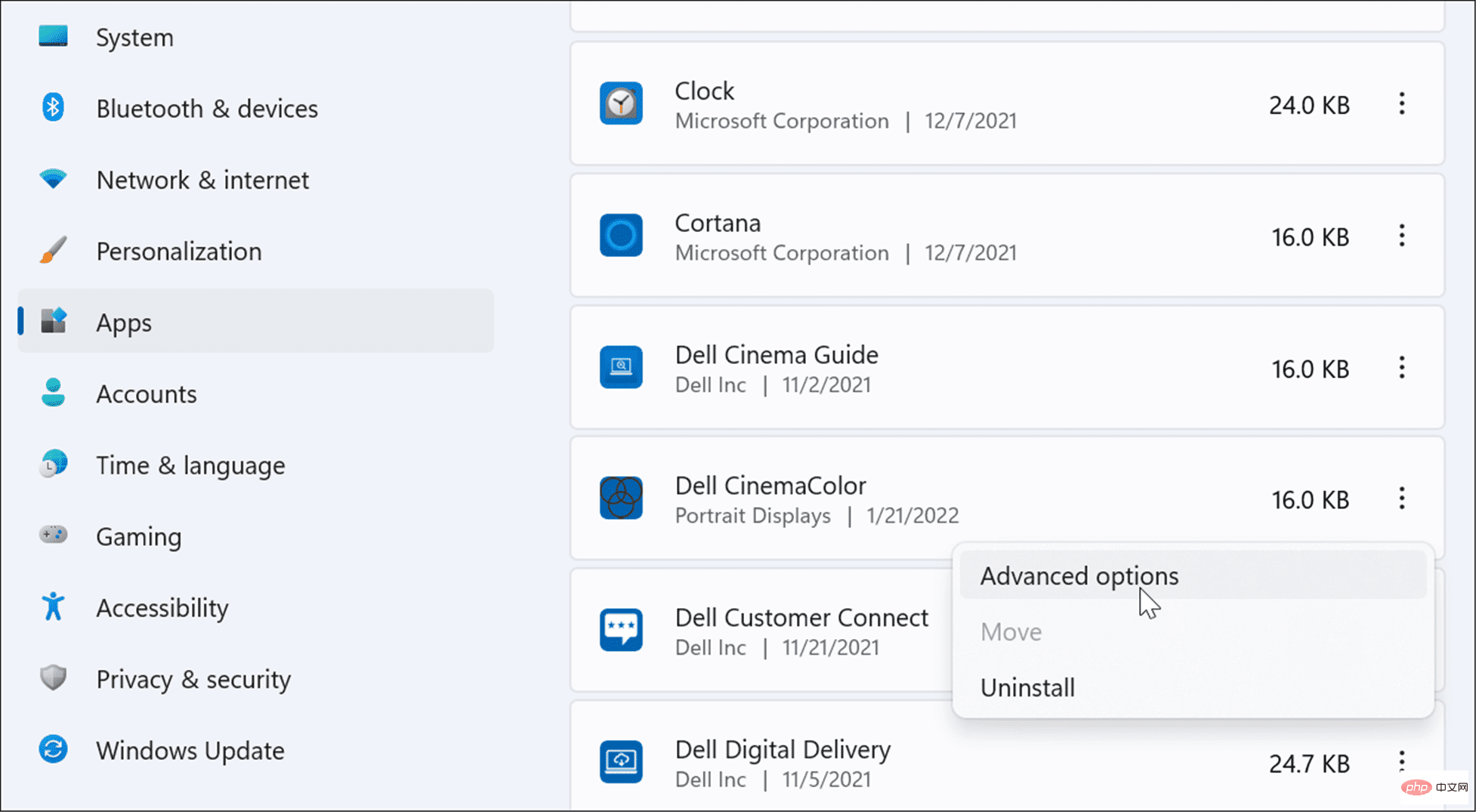
- Under the Background Apps Permissions section, choose how the app should run. You can choose Always, Power Optimized (recommended), or Never.
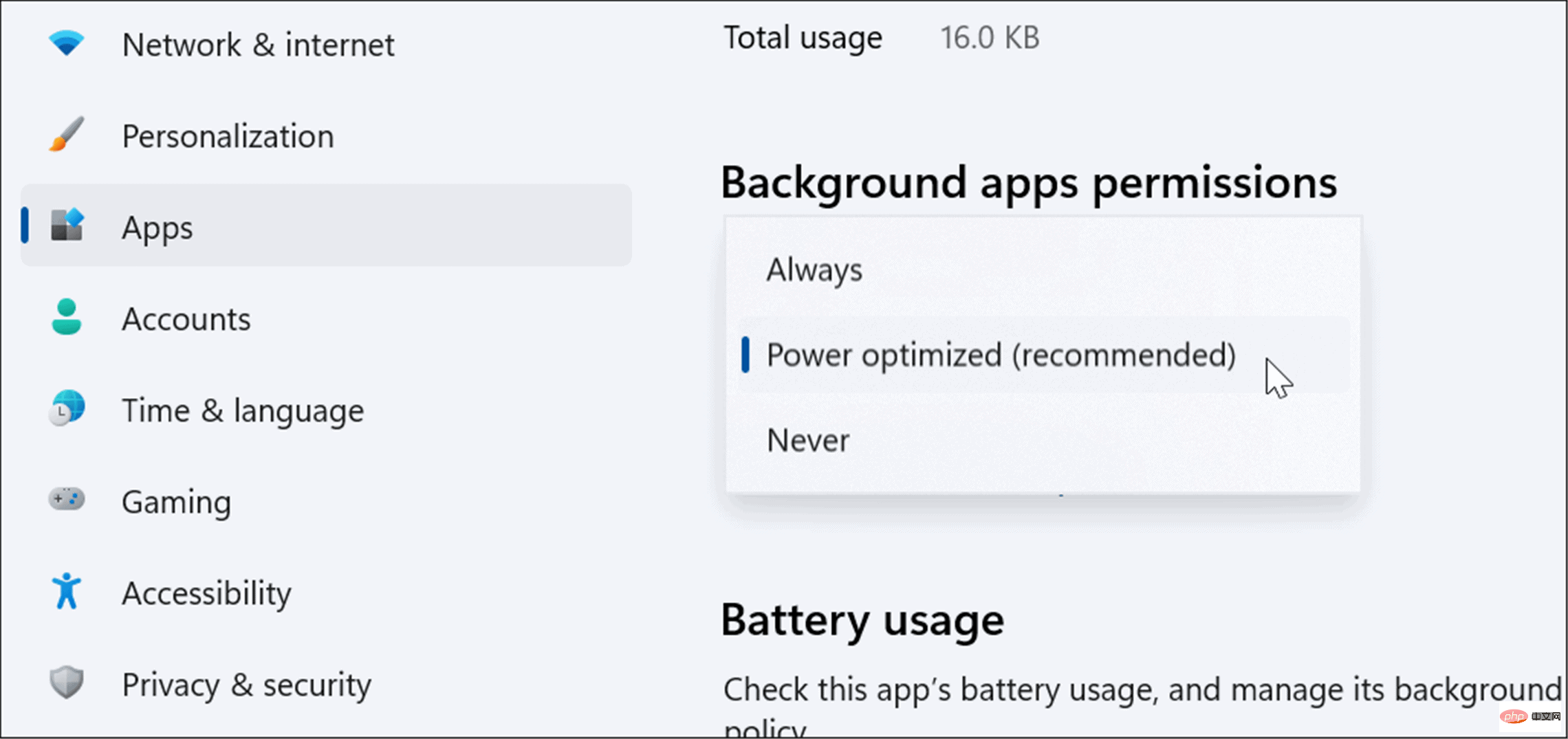
- #If you're not sure if an app is consuming a lot of battery power, you can check its usage. On the same page, click the "Check battery usage" link under the "Battery usage" section.

- It will take you to the "Power & Battery" page in Settings where you can go down Scroll and expand the "Battery Usage " section. There you can view battery usage by app percentage. This section allows you to search for apps or filter them by different criteria such as name or background usage.

Using Hibernation Mode on Windows 11
When you enable Hibernation Mode on Windows 11, it puts your system in Low power state. The feature works by saving data in the local drive's memory so that you can continue where you left off without wasting power.
Using hibernation mode is as easy as using the Power button in the Start menu, but it must be enabled first. To use hibernate mode on Windows 11, use the following steps:
- Open the Start menu, enter Control Panel, and select the top result.
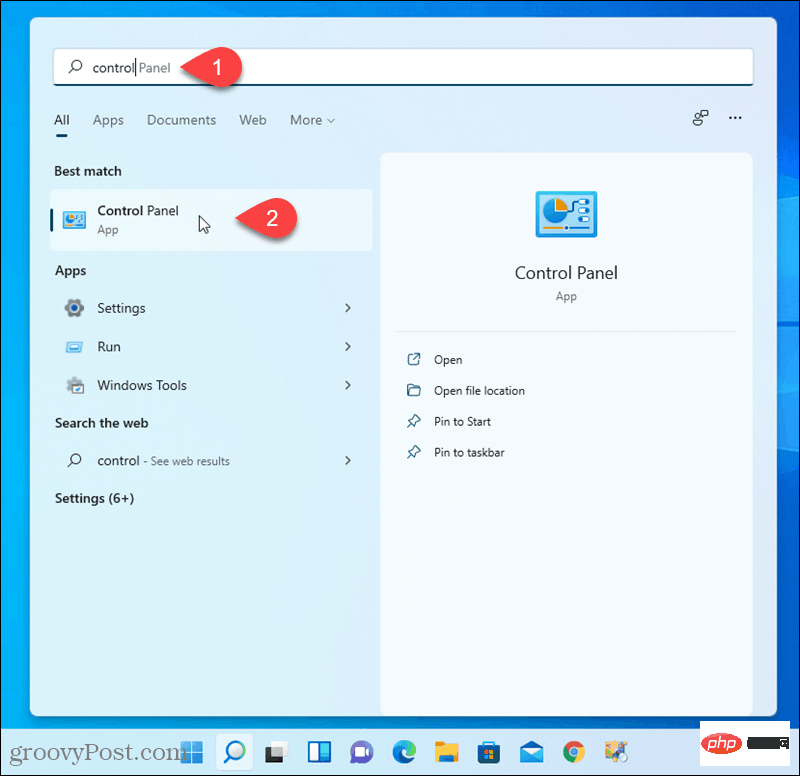
- When Control Panel opens, click Power Options.

- Next, click the Change what the power button does link in the upper left corner.
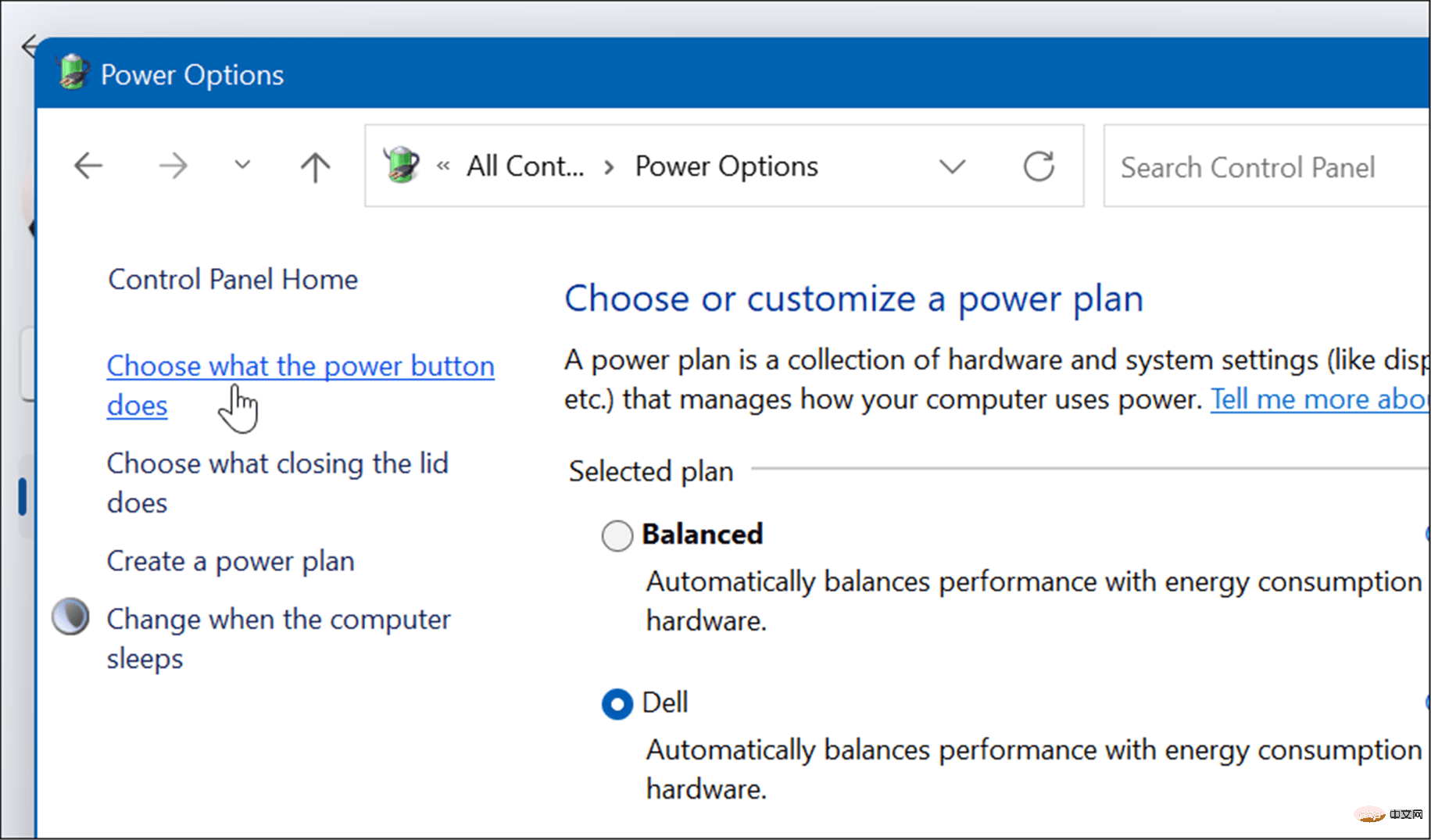
- On the following screen, click the Change settings that are currently unavailable link.
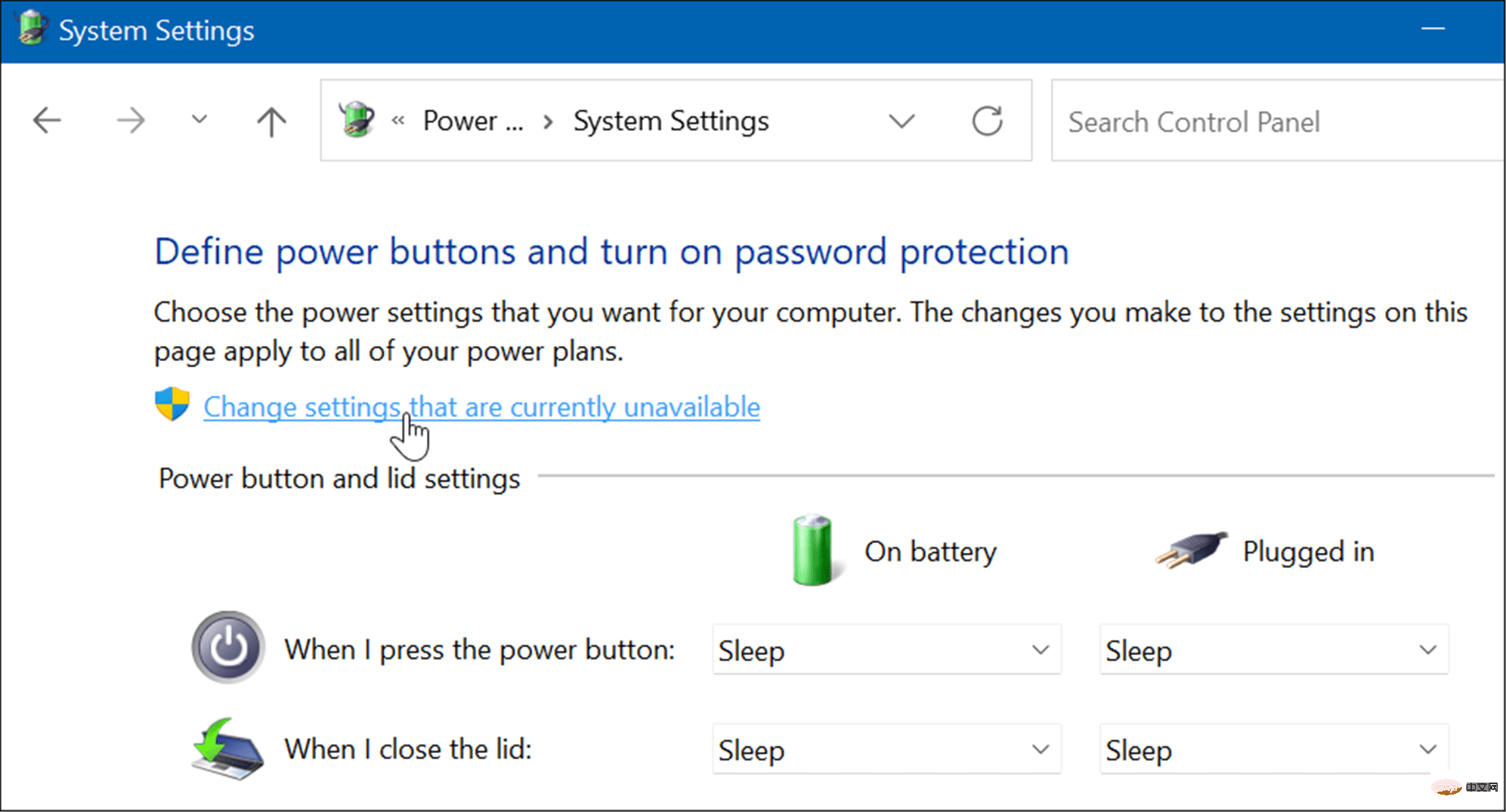
- Next, under the "Shutdown Settings" section, select the "Hibernation" option and click the "Save Changes" button at the bottom.

Hibernation mode is now an option when you shut down or restart Windows 11. Right-click the "Start" button and select "Shutdown" or "Logoff" >"Hibernate".

Change what happens when you close your laptop lid
Change what happens when you close your laptop lid to help save battery power.
To change the power action when the lid is closed, use the following steps:
- Open the Start menu and type control panel , then click the top result.
- When Control Panel opens, click Power Options Options.

- Click the Choose how to close the lid link in the upper left corner.
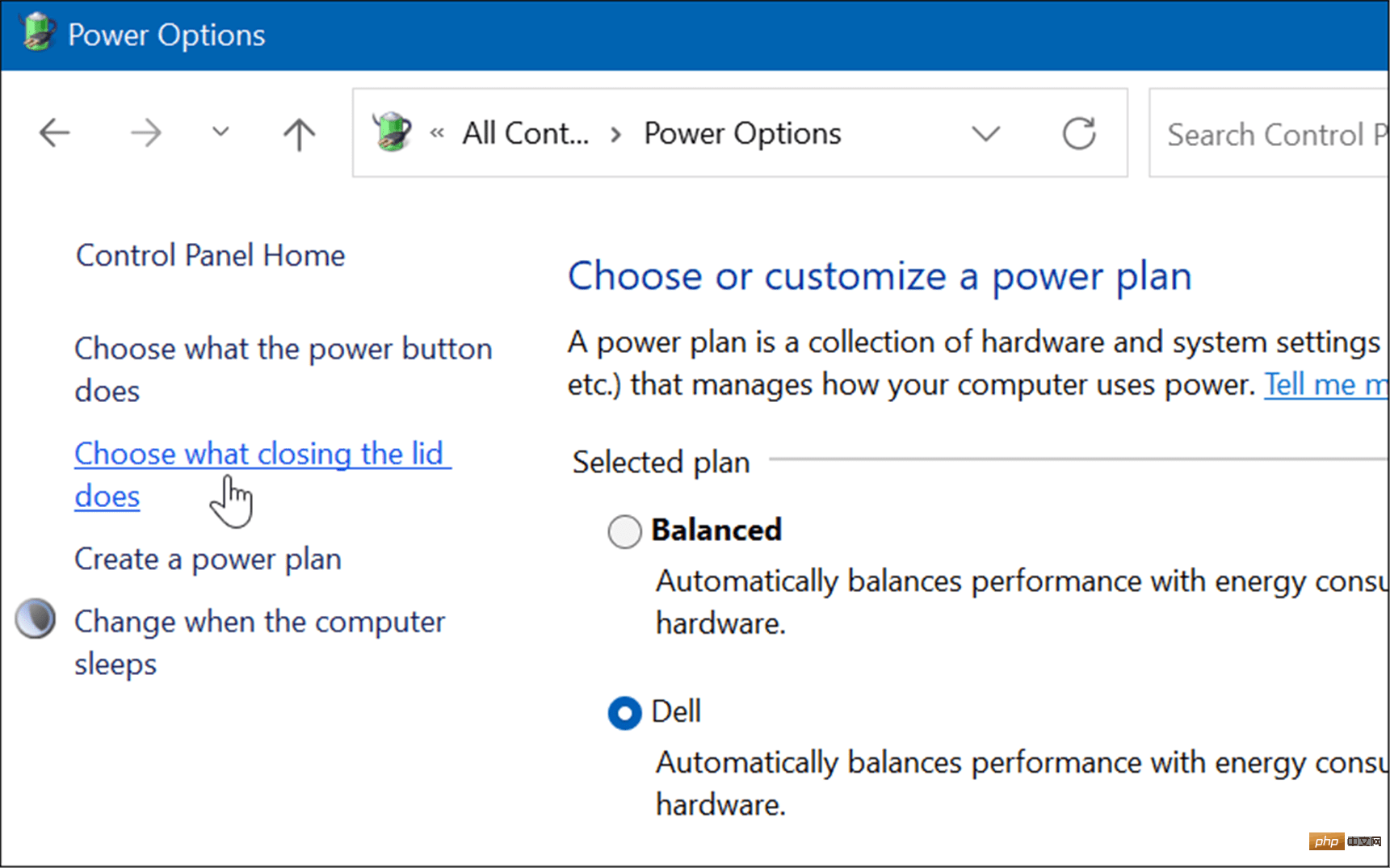
- ##Now, under the "
- Power Button and Lid Settings" section, set it to "When the lid is closed" option next to "Sleep" or "Hibernate".
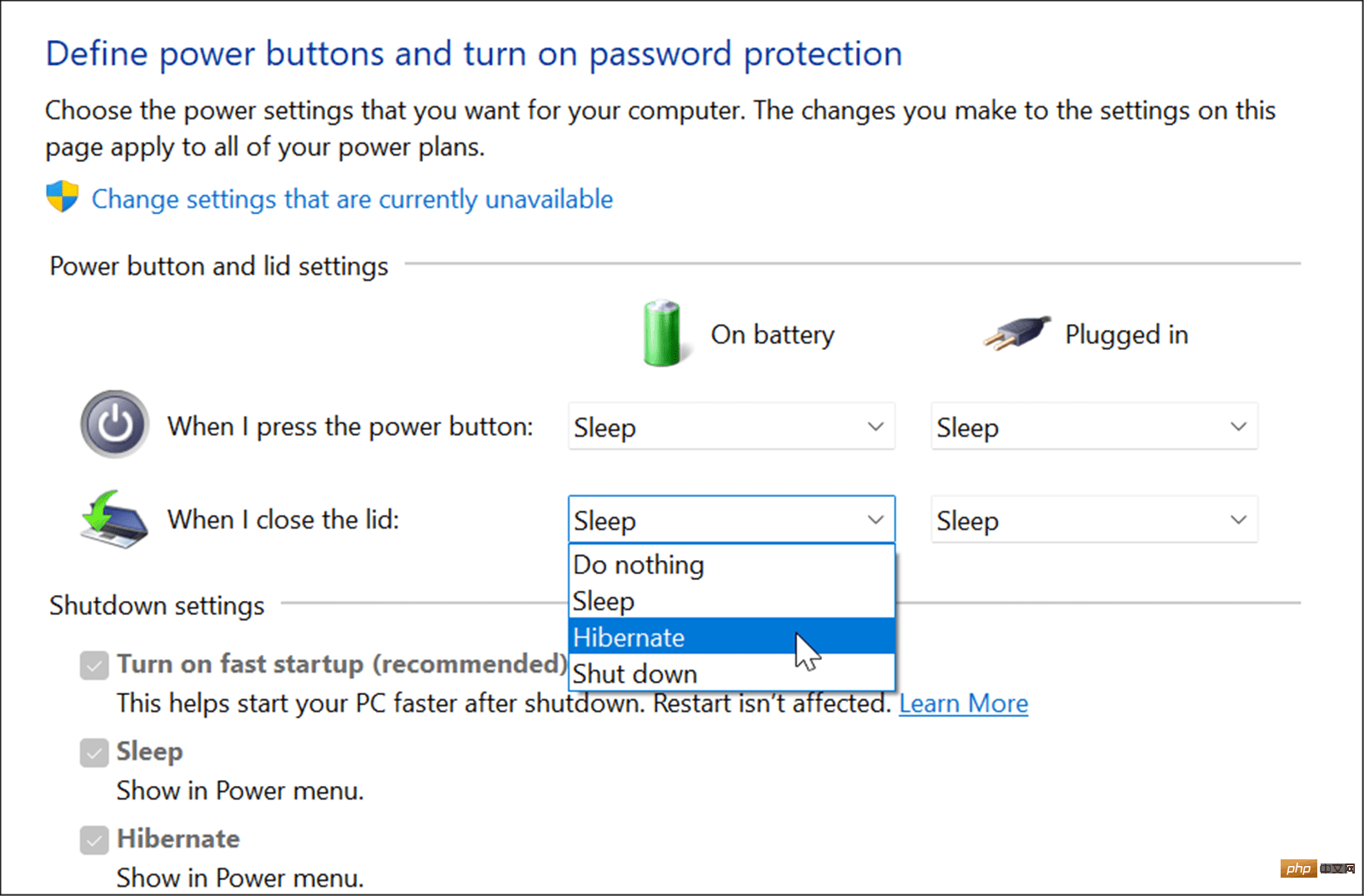
The above is the detailed content of 7 Ways to Improve Battery Life on Windows 11. For more information, please follow other related articles on the PHP Chinese website!

Hot AI Tools

Undresser.AI Undress
AI-powered app for creating realistic nude photos

AI Clothes Remover
Online AI tool for removing clothes from photos.

Undress AI Tool
Undress images for free

Clothoff.io
AI clothes remover

Video Face Swap
Swap faces in any video effortlessly with our completely free AI face swap tool!

Hot Article

Hot Tools

Notepad++7.3.1
Easy-to-use and free code editor

SublimeText3 Chinese version
Chinese version, very easy to use

Zend Studio 13.0.1
Powerful PHP integrated development environment

Dreamweaver CS6
Visual web development tools

SublimeText3 Mac version
God-level code editing software (SublimeText3)

Hot Topics
 What is the reason why PS keeps showing loading?
Apr 06, 2025 pm 06:39 PM
What is the reason why PS keeps showing loading?
Apr 06, 2025 pm 06:39 PM
PS "Loading" problems are caused by resource access or processing problems: hard disk reading speed is slow or bad: Use CrystalDiskInfo to check the hard disk health and replace the problematic hard disk. Insufficient memory: Upgrade memory to meet PS's needs for high-resolution images and complex layer processing. Graphics card drivers are outdated or corrupted: Update the drivers to optimize communication between the PS and the graphics card. File paths are too long or file names have special characters: use short paths and avoid special characters. PS's own problem: Reinstall or repair the PS installer.
 How to speed up the loading speed of PS?
Apr 06, 2025 pm 06:27 PM
How to speed up the loading speed of PS?
Apr 06, 2025 pm 06:27 PM
Solving the problem of slow Photoshop startup requires a multi-pronged approach, including: upgrading hardware (memory, solid-state drive, CPU); uninstalling outdated or incompatible plug-ins; cleaning up system garbage and excessive background programs regularly; closing irrelevant programs with caution; avoiding opening a large number of files during startup.
 How to solve the problem of loading when PS is always showing that it is loading?
Apr 06, 2025 pm 06:30 PM
How to solve the problem of loading when PS is always showing that it is loading?
Apr 06, 2025 pm 06:30 PM
PS card is "Loading"? Solutions include: checking the computer configuration (memory, hard disk, processor), cleaning hard disk fragmentation, updating the graphics card driver, adjusting PS settings, reinstalling PS, and developing good programming habits.
 Is slow PS loading related to computer configuration?
Apr 06, 2025 pm 06:24 PM
Is slow PS loading related to computer configuration?
Apr 06, 2025 pm 06:24 PM
The reason for slow PS loading is the combined impact of hardware (CPU, memory, hard disk, graphics card) and software (system, background program). Solutions include: upgrading hardware (especially replacing solid-state drives), optimizing software (cleaning up system garbage, updating drivers, checking PS settings), and processing PS files. Regular computer maintenance can also help improve PS running speed.
 Is PS slow loading related to other programs that are running?
Apr 06, 2025 pm 06:03 PM
Is PS slow loading related to other programs that are running?
Apr 06, 2025 pm 06:03 PM
The secrets to mastering Office software include: understanding different versions and platforms, correctly installing and configuring, proficient in using the software interface, in-depth understanding of feature operations, application collaboration and sharing functions, utilizing templates and styles, mastering advanced skills, and solving common problems. In addition, you need to choose a version that suits your needs, make good use of templates and styles, develop backup habits, and learn shortcut keys and advanced techniques to improve efficiency.
 How to solve the problem of loading when the PS opens the file?
Apr 06, 2025 pm 06:33 PM
How to solve the problem of loading when the PS opens the file?
Apr 06, 2025 pm 06:33 PM
"Loading" stuttering occurs when opening a file on PS. The reasons may include: too large or corrupted file, insufficient memory, slow hard disk speed, graphics card driver problems, PS version or plug-in conflicts. The solutions are: check file size and integrity, increase memory, upgrade hard disk, update graphics card driver, uninstall or disable suspicious plug-ins, and reinstall PS. This problem can be effectively solved by gradually checking and making good use of PS performance settings and developing good file management habits.
 Does mysql need the internet
Apr 08, 2025 pm 02:18 PM
Does mysql need the internet
Apr 08, 2025 pm 02:18 PM
MySQL can run without network connections for basic data storage and management. However, network connection is required for interaction with other systems, remote access, or using advanced features such as replication and clustering. Additionally, security measures (such as firewalls), performance optimization (choose the right network connection), and data backup are critical to connecting to the Internet.
 How to solve the problem of loading when PS is started?
Apr 06, 2025 pm 06:36 PM
How to solve the problem of loading when PS is started?
Apr 06, 2025 pm 06:36 PM
A PS stuck on "Loading" when booting can be caused by various reasons: Disable corrupt or conflicting plugins. Delete or rename a corrupted configuration file. Close unnecessary programs or upgrade memory to avoid insufficient memory. Upgrade to a solid-state drive to speed up hard drive reading. Reinstalling PS to repair corrupt system files or installation package issues. View error information during the startup process of error log analysis.





